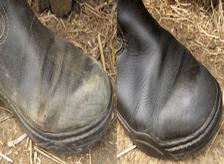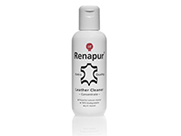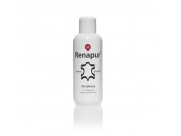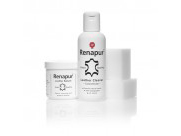How to Clean Leather using the Renapur Leather Care Product Range
We’ve put together a handy guide on how to clean leather to help you achieve the best results and make your leather last longer.
Most leather items are a high value investment - from saddles and motorbike leathers, to a comfy leather sofa or smart car interior – so it’s important to take care of your leather to help extend its life.
The directions below will give guidance on successfully cleaning leather, as well as the best way to apply the Renapur products for effective leather waterproofing.
Renapur Leather Balsam
 The most important point when using Renapur Leather Balsam is to apply it sparingly, do not use too much as it should all be absorbed into the leather.
The most important point when using Renapur Leather Balsam is to apply it sparingly, do not use too much as it should all be absorbed into the leather.- Dip the application sponge into the pot of balsam and wipe the sponge over the edge of the pot to remove any excess. Generally speaking if you can see Renapur Balsam on the sponge you are using too much.
- Gently work the treated sponge over the leather. The Leather Balsam will quickly absorb into the leather working its leather cleaning magic as it goes.
- No need to buff – but if you have applied too much Renapur Leather Balsam and it hasn’t all been absorbed into the leather, then simply wipe off the excess with a soft clean cloth.
If you are using Renapur Balsam to treat shoes and boots then you don’t have to clean them with our cleaner first unless the dirt has ingrained into the leather. Renapur Leather Balsam can deal with a bit of mud or dirt which will just dissolve away from the leather and come off onto the sponge. You can even use Renapur Balsam on leather that is damp.
The Renapur leather cleaning range can be used to clean a variety of leather items, a large number of our customers use their Renapur Leather Balsam to clean their horse tack, leather car interiors and motorcycle leathers. Try our Leather Balsam now and discover the leather cleaning power of Renapur.
Renapur Leather Cleaner

Directions:
- Using clean water lightly dampen the leather you want to clean.
- Dilute 10-20ml of Cleaner with 1 litre of clean lukewarm water. Take a clean sponge, work into a lather, rub gently into the area to be cleaned. For tough dirt use undiluted Cleaner.
- Rinse the cleaned leather with clean water and allow to dry naturally away from direct sunlight or direct sources of heat ie radiators.
- For ultimate protection the leather should then be treated with Renapur Leather Balsam.
Renapur Hi-Shine

Directions:
- Give the container a quick shake.
- Apply a small amount of Renapur Hi-Shine to the applicator sponge. Not too much as a little goes a long way.
- Work the sponge over the leather article applying Renapur Hi-Shine evenly.
- Allow to dry for 15 seconds
- Buff gently to achieve the most beautiful shine
When the shine on your leather starts to diminish just treat with Renapur Leather Balsam which will restore the Hi-Shine instantly. Only use Hi-Shine again when Renapur fails to reinvigorate the shine.
Buffing: An old army trick. Simply stuff an old thick sock into a pair of nylon tights or a stocking and buff your leather with that. It achieves a far better and quicker result than any other way we know. Just use ordinary nylons, fishnets just don’t do the trick in this instance!
Application Sponges

Please note: Keep you sponges separate for each product, for example do not apply Renapur Hi-Shine to a sponge previously used for Leather Balsam as the result will not be so good.
Warning
Renapur Leather Balsam, Leather Cleaner and Hi-Shine are for use on finished i.e. smooth leather only. Do not use on suede, nubuck or fully aniline type leather.
Renapur may darken some types of leather, especially if it has faded over time and with wear. If in doubt, always test on a small concealed area first.
Renapur products are so successful around the world and we think that is testimony to how good they are but please be aware that there are thousands of different types of leather and some may not be compatible with Renapur or any other products, especially those made to create various effects in the fashions industry. If in doubt test an unobtrusive area first.











